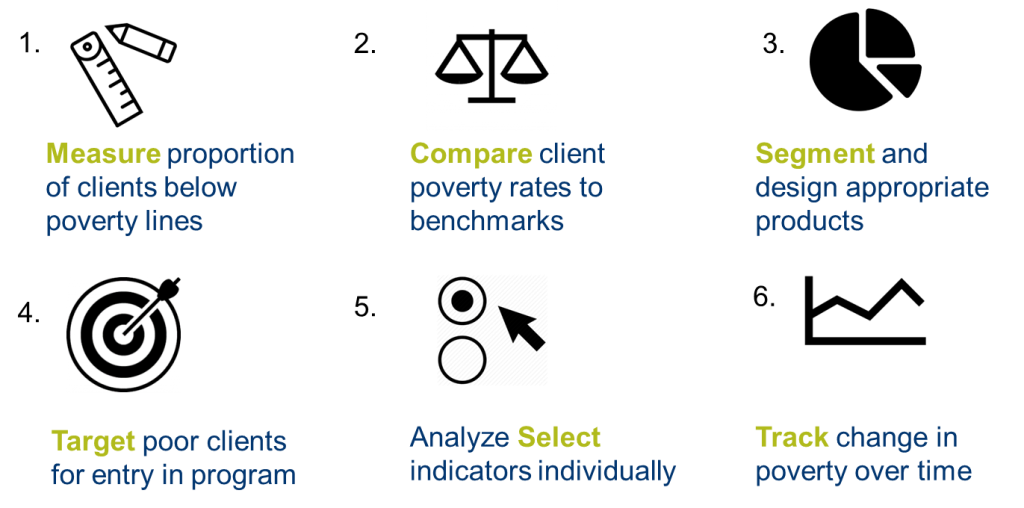
An organization’s poverty outreach represents how well they are reaching the poor. From this data, a practitioner can analyze the organization’s poverty outreach in terms of poverty concentration, scale, and penetration.
Reasons for measuring the poverty outreach of an organization:
Provides a stronger understanding of the characteristics of current customers
Assesses the organization’s methods for reaching the poor
A case study for this can be found here, which is titled Microfinance of Karnataka, India.
Benchmarking is the comparison of an organization’s results to an industry-standard or best practice. Using PPI, an organization can benchmark its poverty outreach to national and regional poverty rates.
Reasons for benchmarking:
Contextualizes poverty outreach
Helps to objectively assess a targeting strategy
Provides an objective measure of performance for stakeholders
A case study for this can be found here, which is titled Rags2Riches.
PPI Users can use results from the PPI to segment clients by poverty level to assess differences in product uptake, performance, and program attrition. Segmentation can also be used in market research to better understand the needs of the specific client groups being targeted.
Reasons for segmenting customers and clients:
Reveals correlations between certain characteristics and poverty bands
A case study for this can be found here, which is titled CARD Bank.
Using PPI, organizations can use a household’s poverty level as an eligibility criterion for providing their services in order to direct services to the households that need them the most.
Reasons for screening and targeting:
Helps the organization achieve the desired poverty outreach
Directs services to the desired type of customer or client
A case study for this can be found here, which is titled Marie Stopes International.
By recording PPI over multiple points in time, an organization can track changes in the rate of poverty among clients.
Reasons for tracking changes in poverty:
Reveals how client lives are changing
Makes it possible to analyze the impact on poverty
A case study for this can be found here, which is titled Grameen Koota.
The PPI provides an objective measure of client poverty related to household expenditure.
Reasons for using combining poverty measurement with other indicators:
Gain richer and more meaningful insights about client households
Meet industry standards such as the USSPM, COSA, etc
A case study for this can be found here, which is titled Chirag.